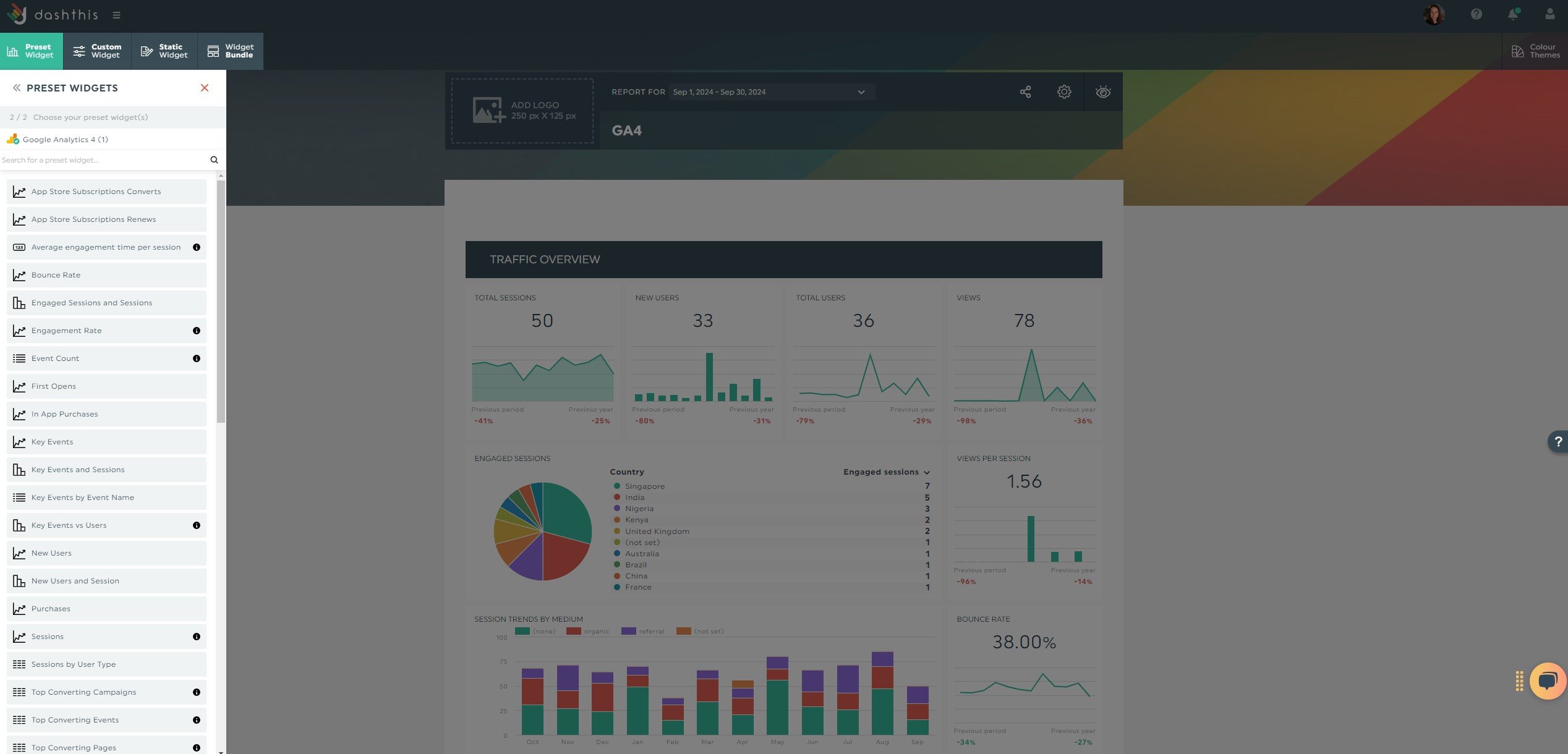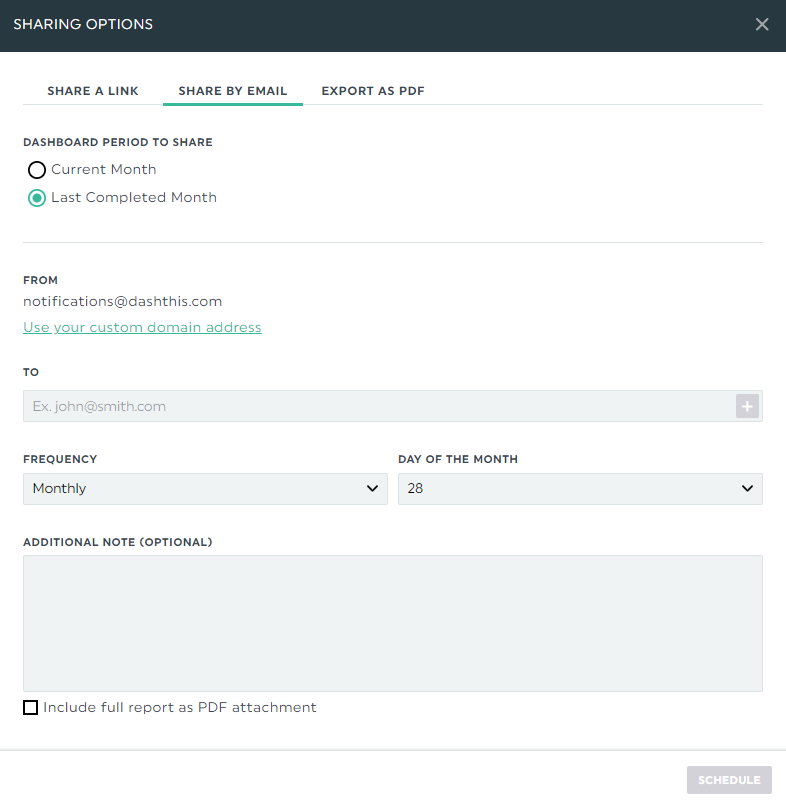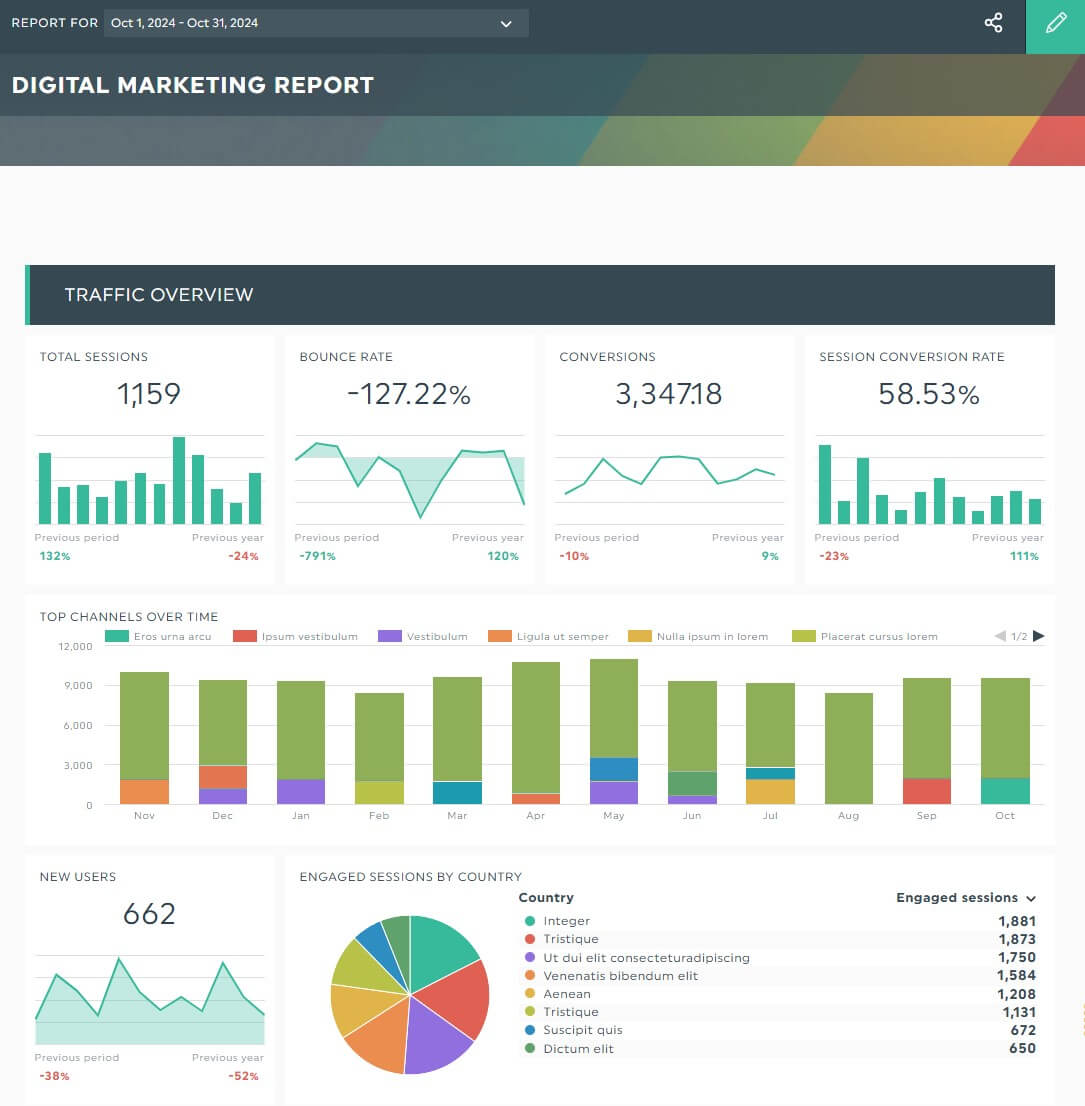Omnichannel Analytics: Everything a Beginner Must Know

Nowadays, it takes a mix of channels to convert a customer.
With more modern consumers expecting a tailored and seamless experience, it’s never been more important for brands to implement an omnichannel strategy.
By interconnecting multiple channels seamlessly, you maintain conversation continuity wherever customers are at. To stay ahead of trends, that’s where analytics comes in. As you measure customers’ activity across these channels, you’ll understand their behavior, delight with personalized interactions, and craft a unique experience for everyone at scale.
But first, we need to learn how to walk before we can run.
In this guide, let’s explore the nuts and bolts of omnichannel analytics and how you can get started.
- What is Omnichannel Analytics?
- Why Omnichannel Analytics is Important for Marketers
- Getting Started with Omnichannel Analytics
- The Role of Automation in Omnichannel Marketing
- Automate Your Omnichannel Reporting with DashThis Today
What is Omnichannel Analytics?
Omnichannel analytics is the analysis of your entire customer data across interconnected marketplaces, channels, devices, and platforms.
Key components include:
(i) Customer data platform: Create a single source of truth for all customer-centric departments, including product, sales, and customer success. Every stakeholder gets a 360-degree view of all customer interactions (e.g., chatbots, social media platforms) in one place.
(ii) Integration: Eliminate departmental silos. Data from online and offline channels are tightly integrated, ensuring organizational alignment, seamless user experience, and utmost customer satisfaction.
(iii) Segmentation: Email blasts…rarely work. Categorize customers based on actions and attributes. This way, you target them with hyper-personalized messages and offers at the best possible time.
(iv) Customer journey mapping: Map the customer journey holistically across marketplaces, channels, devices, and platforms. This is multiple steps above traditional marketing, which only analyzes customer activity on individual channels.
(v) Attribution: Unlike traditional marketing analytics that use first- or last-click models, omnichannel reporting employs advanced attribution models and predictive analytics to predict purchasing trends and engagement levels.
Omnichannel involves not just marketers. It’s an all-hands-on-deck initiative that delivers maximum engagement with consumers from beginning to end.
Why Omnichannel Analytics is Important for Marketers
The benefits of omnichannel analytics extend across the entire organization. For this article, let’s explore its impact on marketers.
You get to create a seamless customer experience and cultivate loyalty
Imagine a customer entering your store looking for loafers.
Unfortunately, it’s sold out.
But here’s where it gets interesting.
Instead of suggesting another product, your sales associate offers to ship the loafers from the warehouse directly to the customer’s address. The customer agrees and the associate processes payment immediately. Since the customer had previously shopped at your eCommerce site, you have their shipping and billing information on hand. This speeds up the transaction, creating a smooth customer experience.
The next weekend, the customer’s back in store.
They’d just received a promo email about a limited edition trench coat — a statement piece that would no doubt look fantastic with the loafers bought earlier.
That’s the power of an omnichannel experience.
By creating a unified shopping experience (like the fuss-free “buy in store, ship to home” delivery) for this unique customer, you show you know what shoppers want and need, speeding ahead to cultivate loyalty.
You get to target customers where they’re at
With a holistic view of all customer activity in one place, you gain deeper insights into customers’ preferences and buying habits.
The loafers example above?
The hyper-personalized promo email is made possible because the retail company tracks the customer’s behavior across channels.
Not only does implementing omnichannel analytics informs your inventory decisions, but it also helps segment customer profiles and send more targeted offers that compel shoppers to take action.
You get to boost revenue and ROI
Interconnecting all channels to create a personalized experience for every individual consumer means better experience, higher average order value (AOV), and greater revenue.
The numbers prove it.
A quick search shows studies on how an omnichannel retail strategy leads to shoppers spending more than single-channel customers.
As you track your sales conversion rates, measure it alongside metrics like engagement and NPS. You’ll quickly spot the best-performing marketing campaigns from an ROI standpoint.
Getting Started with Omnichannel Analytics
Time to get your feet wet. An omnichannel approach requires you to:
1. Define your omnichannel analytics goals and KPIs
Rally the marketing, sales, product, and customer success departments to define shared goals and KPIs for your omnichannel analytics strategy.
For example, a health and fitness app developer wanting recurring revenue from existing users (shared goal) will focus on improving retention rate for its mobile apps (KPI). Marketing might create content for the help center, customer success could check in with clients weekly, etc.
YOUR ACTION PLAN:
- Align all customer-centric departments to define shared goals and metrics
- Appoint a stakeholder from each department to review them weekly
- Adjust omnichannel strategy based on results (e.g., if a specific client-facing asset is rarely used, marketing should gather more context from sales and tweak it accordingly)
2. Assess your current data infrastructure
Review your current tech stack, paying attention to how it interacts with your offline channels.
Afterwards, identify the areas where attribution issues and data silos frequently emerge.
For example, new clients complaining about repeating themselves during onboarding is a sign of poor handover between sales and customer success. In this case, you’ll want to invest in an omnichannel analytics platform that aligns these departments.
And while you’re at it, identify the channels that resonate most with your best customers today (e.g., a Fortune 500 CMO might be active on LinkedIn and webinars). This uncovers channels you might not be aware of.
YOUR ACTION PLAN:
- Identify attribution issues and data silos across all tools in your tech ecosystem (including offline channels)
- Interview internal teams to gather context around these issues (e.g., “What’s preventing [marketing] from doing your best work?”)
3. Establish data collection and integration processes
Now map all marketplaces, channels, devices, and platforms across the customer journey, along with the types of data you’re collecting: purchase history from customer engagement platform, page views and link clicks from lead generation solutions, etc.
This helps you understand what’s happening across multiple data sources and narrow down the best omnichannel analytics solutions for your use cases.
YOUR ACTION PLAN:
- Map the customer journey
- Determine what customer data you’re collecting (e.g., transactional data, demographics).
4. Select an omnichannel analytics platform
You have several options depending on your customer experience and tech ecosystem.
For example, if you’re an enterprise company wanting to deliver personalized messages to millions of consumers across regions, you’ll likely use an advanced customer data platform like Adobe Experience Cloud.
However, if you’re an eCommerce store that (a) wants to convert shoppers on their favorite devices and (b) needs your point-of-sale (POS) and ecommerce systems under one umbrella, Shopify Plus is your best bet.
Alternatively, if you just need to connect your marketing channels and analyze their overall performance easily, a straightforward like DashThis will suffice.
DashThis is the easiest marketing reporting tool. Automatically gather your entire data across multiple marketing channels into one beautiful report.
Note the dashboard below. It combines data from Google Analytics 4, Google Ads, and Google Search Console in a single report.

Features and benefits of DashThis include:
- All-in-one dashboard to view overall marketing performance at a single glance
- Native integrations with 30+ various channels, including Facebook Business Manager, Mailchimp, and LinkedIn Pages
- CSV file manager to add custom data and visualize them in digestible formats
- Google Sheets integration to add any metrics, from any source, custom calculations, or proprietary data
- Unlimited capabilities for accounts, data sources, and users, no matter what plan you’re on
- Multiple sharing options like URL link, PDF, and automatic email dispatch
DashThis is the easiest automated marketing reporting tool. Start your free 15-day trial today.
YOUR ACTION PLAN:
- Select an omnichannel analytics platform that integrates seamlessly with your tech stack. Pro tip: Ensure compliance with GDPR and other data protection regulations.
5. Configure your omnichannel analytics dashboard
Most omnichannel analytics platforms include built-in reports, but you still need to customize them to display the omnichannel data you need.
At this stage, start with a template.
And play with the customizable filters and columns.
Display the goal, KPI, and key metrics set up as a cross-functional team from step #1.
For example, if you want to highlight the improved retention rate in the past month, show expansion monthly recurring revenue (MRR), product stickiness, and customer lifetime value (CLV) in the same section.
YOUR ACTION PLAN:
- Spotlight shared goal, KPI, and metrics (discussed in step #1) in the dashboard to track your omnichannel strategy progress.
The Role of Automation in Omnichannel Marketing
Engaging and converting a customer today requires more than a single channel.
According to a lead generation agency founder, selling software solutions to mid-sized companies can take up to 10 channels and 62 touchpoints over the span of 350 days.
To convert these buyers, you need to target where they’re at.
Sounds straightforward, but wait till you analyze results across these platforms manually. Every. Single. Month.
It’s a pain!
Consider automating your omnichannel (or multi- or cross-channel marketing) reporting to DashThis.
This easiest reporting tool gathers your entire marketing data across multiple channels into one beautiful report. You’ll gain back hours, freeing up more time for value-added activities like strategizing the next campaign and building relationships with your best customers today.
Here’s how it works:
- Select a free report template
- Connect your data analytics tools with DashThis
- Pick your metrics in Preset Widgets (tip: if you can’t find the data you’re looking for, connect DashThis with Google Sheets. This lets you add any metrics, from any source, custom calculations, or proprietary data)
Wait a few seconds while DashThis automatically gathers the metrics. Drag and drop them to form a cohesive look.

Customize the report. Share actionable insights or additional context via the Comments and Notes widgets respectively.
For example, here’s how it might look when you share the next quarter’s marketing strategy. To achieve this in your report, click Static Widget > Comments.

Click Save.
With these results, insights, and recommendations directly in the report, stakeholders can analyze everything right there. It speeds up the decision-making process by a mile.
Once done, schedule an automatic email dispatch to all stakeholders:
- Hover over the Sharing Options icon in the top right
- Click Share by Email
- Set the dashboard period and frequency
- Add an optional note
- Click Schedule
Automatically send your report based on your preferred schedule.

Alternatively, copy the URL link and share it via your team communication channels.
Both options let you view the reports in real-time.
DashThis is the easiest automated marketing reporting tool. Start your free 15-day trial today.
Free multi-channel marketing template
Reckon a multi-channel strategy is what you need? This data-driven report template’s got you covered. Identify your best-performing marketing efforts, do more of what works, and maximize your ROI.

Grab this free report template with your own data!
Automate Your Omnichannel Reporting with DashThis Today
Modern customers today expect channels to work together seamlessly.
Your omnichannel analytics pinpoint customer behavior and preferences, ensuring you craft a unique journey for everyone at scale.
The ideal omnichannel analytics tool depends on your tech ecosystem and customer experience.
If you want to connect your marketing channels and analyze their overall performance in one tab, consider DashThis.
DashThis is the easiest marketing reporting tool. Automatically gather your entire marketing data across different channels into one beautiful report.
Pricing starts at $42/month when billed annually. All plans include unlimited users, integrations, and data sources. Start your free 15-day trial today.
Ready to measure your omnichannel analytics with Dashthis?
Read More
Don’t miss out!
Automate your reports!
Bring all your marketing data into one automated report.
Try dashthis for free

